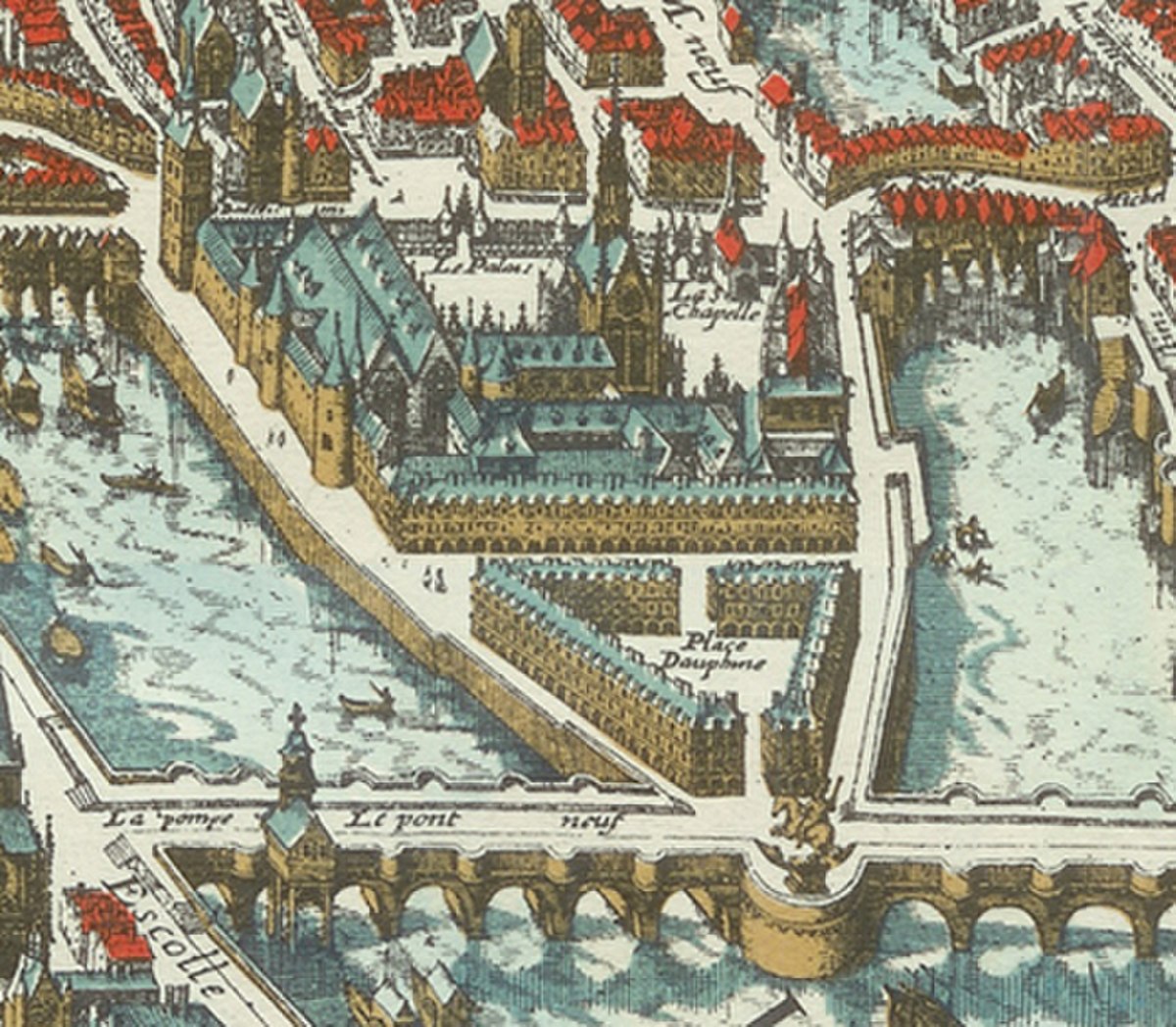
Paris under Henry IV
Pont Neuf, Paris, FranceParis had suffered greatly during the wars of religion; a third of the Parisians had fled; the population was estimated to be 300,000 in 1600. Many houses were destroyed, and the grand projects of the Louvre, the Hôtel de Ville, and the Tuileries Palace were unfinished. Henry began a series of major new projects to improve the functioning and appearance of the city, and to win over the Parisians to his side. The Paris building projects of Henry IV were managed by his forceful superintendent of buildings, a Protestant and a general, Maximilien de Béthune, Duke of Sully.
Henry IV recommenced the construction of the Pont Neuf, which had been begun by Henry III in 1578, but had stopped during the wars of religion. It was finished between 1600 and 1607, and was the first Paris bridge without houses and with sidewalks. Near the bridge, he built La Samaritaine (1602–1608), a large pumping station which provided drinking water, as well as water for the gardens of the Louvre and the Tuileries Gardens.
Henry and his builders also decided to add an innovation to the Paris cityscape; three new residential squares, modeled after those in Italian Renaissance cities. On the vacant site of the old royal residence of Henri II, the Hôtel des Tournelles, he built an elegant new residential square surrounded by brick houses and an arcade. It was built between 1605 and 1612, and was named Place Royale, renamed Place des Vosges in 1800. In 1607, he began work on a new residential triangle, Place Dauphine, lined by thirty-two brick and stone houses, near the end of the Île de la Cité. A third square, Place de France, was planned for a site near the old Temple, but was never built.
Place Dauphine was Henry's last project for the city of Paris. The more fervent factions of the Catholic hierarchy in Rome and in France had never accepted Henry's authority, and there were seventeen unsuccessful attempts to kill him. The eighteenth attempt, on May 14, 1610 by François Ravaillac, a Catholic fanatic, while the King's carriage was blocked in traffic on rue de la Ferronnerie, was successful. Four years later, a bronze equestrian statue of the murdered king was erected on the bridge he had constructed at the Île de la Cité western point, looking toward Place Dauphine.
